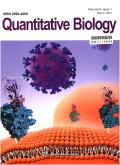Constructing efficient bacterial cell factories to enable one‐carbon utilization based on quantitative biology: A review
IF 0.6
4区 生物学
Q4 MATHEMATICAL & COMPUTATIONAL BIOLOGY
引用次数: 0
Abstract
Developing methylotrophic cell factories that can efficiently catalyze organic one‐carbon (C1) feedstocks derived from electrocatalytic reduction of carbon dioxide into bio‐based chemicals and biofuels is of strategic significance for building a carbon‐neutral, sustainable economic and industrial system. With the rapid advancement of RNA sequencing technology and mass spectrometer analysis, researchers have used these quantitative microbiology methods extensively, especially isotope‐based metabolic flux analysis, to study the metabolic processes initiating from C1 feedstocks in natural C1‐utilizing bacteria and synthetic C1 bacteria. This paper reviews the use of advanced quantitative analysis in recent years to understand the metabolic network and basic principles in the metabolism of natural C1‐utilizing bacteria grown on methane, methanol, or formate. The acquired knowledge serves as a guide to rewire the central methylotrophic metabolism of natural C1‐utilizing bacteria to improve the carbon conversion efficiency, and to engineer non‐C1‐utilizing bacteria into synthetic strains that can use C1 feedstocks as the sole carbon and energy source. These progresses ultimately enhance the design and construction of highly efficient C1‐based cell factories to synthesize diverse high value‐added products. The integration of quantitative biology and synthetic biology will advance the iterative cycle of understand–design–build–testing–learning to enhance C1‐based biomanufacturing in the future.基于定量生物学构建高效细菌细胞工厂,实现一碳利用:综述
开发能高效催化二氧化碳电催化还原产生的有机一碳(C1)原料为生物基化学品和生物燃料的养甲细胞工厂,对于建立碳中和的可持续经济和工业体系具有重要的战略意义。随着 RNA 测序技术和质谱分析技术的飞速发展,研究人员已广泛使用这些定量微生物学方法,特别是基于同位素的代谢通量分析,来研究天然 C1 利用细菌和合成 C1 细菌从 C1 原料开始的代谢过程。本文回顾了近年来利用先进的定量分析来了解以甲烷、甲醇或甲酸盐为原料生长的天然 C1 利用细菌的代谢网络和代谢基本原理的情况。所获得的知识可指导人们重新连接天然 C1 利用细菌的中央养甲代谢,以提高碳转化效率,并将非 C1 利用细菌改造成能利用 C1 原料作为唯一碳源和能源的合成菌株。这些进展最终将促进设计和建造基于 C1 的高效细胞工厂,以合成各种高附加值产品。定量生物学与合成生物学的结合将推进 "理解-设计-构建-测试-学习 "的迭代循环,从而在未来提高基于 C1 的生物制造水平。
本文章由计算机程序翻译,如有差异,请以英文原文为准。
求助全文
约1分钟内获得全文
求助全文
来源期刊

Quantitative Biology
MATHEMATICAL & COMPUTATIONAL BIOLOGY-
CiteScore
5.00
自引率
3.20%
发文量
264
期刊介绍:
Quantitative Biology is an interdisciplinary journal that focuses on original research that uses quantitative approaches and technologies to analyze and integrate biological systems, construct and model engineered life systems, and gain a deeper understanding of the life sciences. It aims to provide a platform for not only the analysis but also the integration and construction of biological systems. It is a quarterly journal seeking to provide an inter- and multi-disciplinary forum for a broad blend of peer-reviewed academic papers in order to promote rapid communication and exchange between scientists in the East and the West. The content of Quantitative Biology will mainly focus on the two broad and related areas: ·bioinformatics and computational biology, which focuses on dealing with information technologies and computational methodologies that can efficiently and accurately manipulate –omics data and transform molecular information into biological knowledge. ·systems and synthetic biology, which focuses on complex interactions in biological systems and the emergent functional properties, and on the design and construction of new biological functions and systems. Its goal is to reflect the significant advances made in quantitatively investigating and modeling both natural and engineered life systems at the molecular and higher levels. The journal particularly encourages original papers that link novel theory with cutting-edge experiments, especially in the newly emerging and multi-disciplinary areas of research. The journal also welcomes high-quality reviews and perspective articles.
 求助内容:
求助内容: 应助结果提醒方式:
应助结果提醒方式:


